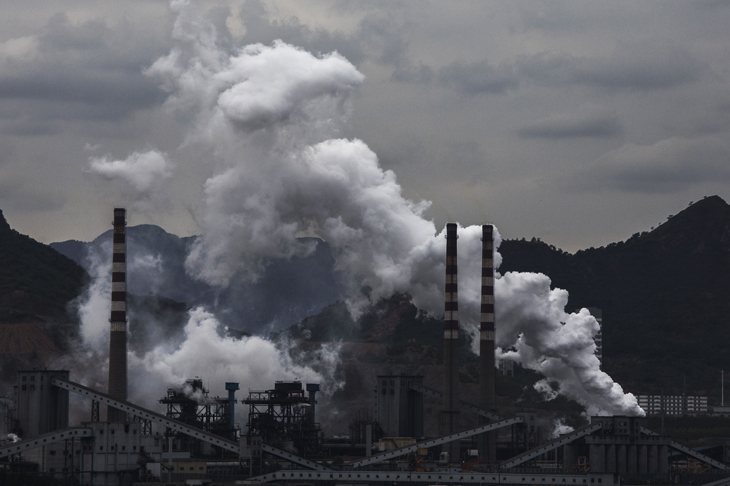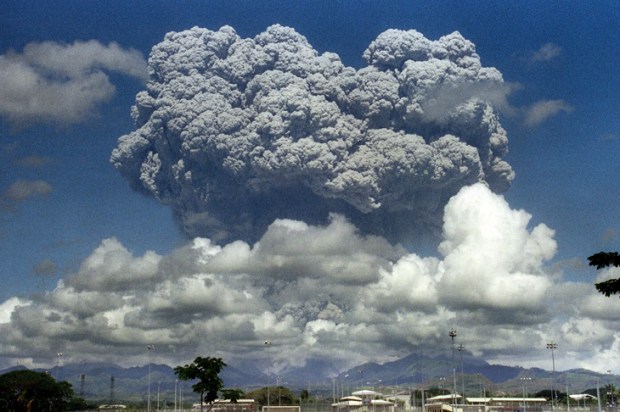When the infighting over the Liberal leadership raised the possibility that Australia might join the United States in exiting the Paris Agreement on climate change, commentators of all types manned the barricades. The Paris Agreement was all that was standing between the world and fiery doom we were told; Australia’s international reputation would suffer, trading would be more difficult and so on.
But anyone who reads the independent (that is, non-activist) commentary on the Agreement and looks at the details of different country pledges will realise that the agreement reached in Paris in late 2015 is hot air. Australia may have to take some pain in meeting its obligations, assuming it does not withdraw, but few of the major emitters will have to.
Of the top seven greenhouse gas emitters, the US, China, India, the European Union (treated as one entity), Russia, Indonesia and Brazil, America has withdrawn, China and India don’t have to do anything at all, while Indonesia and Brazil may pursue long-delayed reforms, if they do anything at all.
The Paris Agreement requires governments to produce targets for the reduction of emissions, with the size and form of the targets up to the individual governments. The treaty does not require the countries involved to meet the stated targets, just produce a plan and update it every five years with more ambitious targets.
Both China and India produced plans which involved reductions in emission intensity per unit of GNP. China promised to ‘peak’ its greenhouse emissions by 2030, and reduce energy intensity per new unit of output by 60-65 per cent, relative to 2005 figures, by 2030.
That is, it would take less energy to grow its economy. As China watchers quickly pointed out, those figures are less than what was expected to occur in the Chinese economy anyway. Energy intensity per unit of output has been falling since China started industrialising in the 1980s, just as it has been falling for many decades in the West. Economic growth emphasises services which use less energy than industry.
Another way of looking at this pledge is that China can increase emissions as much as it likes, provided it keeps emission intensity on track. The US Energy Information Agency has previously estimated that China’s emissions are expected to grow by 32 per cent through to 2040.
China is struggling with a huge pollution problem, particularly in its major cities, but much of this is due to domestic rather than industrial users, with householders burning briquettes of unprocessed coal resulting in lots of fine particles in the air. Briquettes have not been commonly used for domestic heating in Australia for decades.
India made a similar promise on energy intensity, plus a pledge that 40 per cent of installed electricity generating capacity would be non-fossil fuel by 2030. Again, this sounds impressive given that 75 per cent of the nation’s power comes from coal, and just under 5 per cent from wind and solar.
But the pledge talks about installed capacity, not power delivered. According to the Indian Central Electricity Authority, the five per cent of solar and wind energy delivered comes from 17.5 per cent of installed capacity, with hydro power (which counts as non-fossil) making up another 14 per cent, nuclear another two per cent and biomass (burning wood amongst other things) 2.6 per cent.
Finding an additional four percentage points in a decade or so will not be a burden, particularly as the country is already planning a major expansion of its hydro facilities.
The Russian Federation, which ranks fifth among the greenhouse gas generators, with emissions far in excess of Australia, has promised to cut those emissions to 70-75 per cent of its 1990 levels. Like the promises of China and India this sounds impressive at the conference table but does not involve the Russian economy taking any pain.
In 1990 the grossly inefficient old socialist industry was still in place only to collapse in the following decade. After some recovery, the country’s economy all but imploded in 2015. If that wasn’t enough, Russia’s plan includes an allowance for the country’s vast forests. A lot of emissions can be waved away by slight changes in calculating the amount of CO2 absorbed by those forests. India has also allowed itself some room to manoeuvre in forestry.
In contrast, the pledge by Indonesia, almost as large an emitter as Russia, may be useful. That country has declared that it will reduce emissions by 29 per cent by 2030, against a baseline projected from historic emissions growth. However, just 20 per cent of the country’s emissions come from energy production, with much of the rest coming from land use changes and big forest and peat fires, often resulting from the widespread slash and burn approach to land clearance, which is supposed to be illegal.
If the government found the political will to enforce its laws, emissions might well be reduced. The Indonesian government also pledged to improve waste management which, given that the capital Jakarta is notorious for its mounds of uncollected waste, would be a useful reform indeed.
This analysis could continue but it is clear that the bulk of the major emitters have produced pledges that involve existing trends, or reforms which were to be enacted anyway. Only a handful of the countries making pledges are interested in the sort of painful, difficult reforms required to make any serious inroads into emissions.
Many changes of prime ministers ago, Kevin Rudd declared that gaining a useful agreement at the 2009 Copenhagen climate conference was ‘the greatest moral challenge of our time’.
Whether that is true or not, and despite all the hoopla generated by the Paris treaty, the deal has demonstrated yet again that the task of reining in emissions world-wide by agreement is all but impossible.
Got something to add? Join the discussion and comment below.
Get 10 issues for just $10
Subscribe to The Spectator Australia today for the next 10 magazine issues, plus full online access, for just $10.
You might disagree with half of it, but you’ll enjoy reading all of it. Try your first month for free, then just $2 a week for the remainder of your first year.














Comments
Don't miss out
Join the conversation with other Spectator Australia readers. Subscribe to leave a comment.
SUBSCRIBEAlready a subscriber? Log in